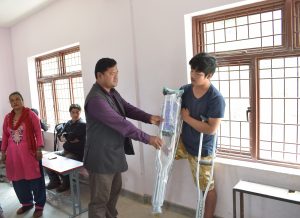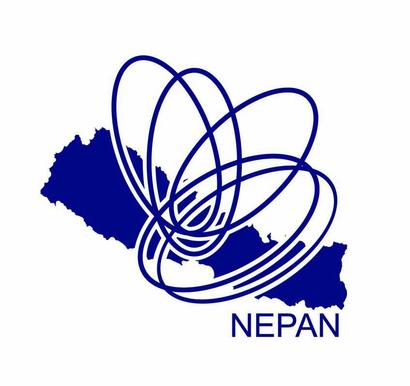CURRENT PROJECTS
SAPPROS – Purnima/Sambodhan
Timeline: 21 December 2018-20December 2020
Location: Nuwakot (Shivapuri, Tadi and Dupcheshwar Rural Municipality)
NEPAN is currently running a Sambodhan project which is a two year innovative sub-project designed in order to meet output of Purnima Project, funded by DFID/MOTT MacDonald: a Challenge Fund to ‘Leave No-one Behind (LNOB)’ in the construction effort and to store and improve livelihoods, food security and access to services for five category of most vulnerable people: single women, persons with disabilities(PwD), internally displaced persons (IDP), elderly and food insecure households in a total of three assigned rural municipalities.

Objectives:
- Social Component: Enhanced social inclusion through strengthened community social networks,
more effective representation and access to services; - Economic Component: Improved food security and higher income for the most vulnerable
households; - Housing Component: Safe shelter for the most vulnerable groups giving dignity and enable
them to pursue livelihoods;
Major Activities:
- Project team to design baseline survey data collection instruments involving technical expertise
from consortium partners; - Orient inclusive self-group on social services based on policy provision and process;
- Organize trainings on leadership development, communication, advocacy, social conflict
management (facilitation, negotiation, social harmony); - Link inclusive self-help groups with service providers such as service camp;
- Undertake referral for services from specialised agencies such as assistive devices for persons
with disability, elder people, etc; - Organize ToT for available local resource persons. Consortium members to work as resource
persons; - Strengthen capacity of self-help groups in saving and credit and leverage resources from
cooperatives, Bank, MFIs. Sappros to provide technical support; - Demonstrate improved technology at most vulnerable households;
- Provide improved varieties of cereal crops and vegetables, breeds and other appropriate
technologies based on local resource materials to most vulnerable households - Promote minor but highly nutritious crops and vegetables such as finger millets, buckwheat, oat,
nettle, etc; - Introduce post- harvest technology and improve/ develop market infrastructure such as collection
centers; - Improve traditional skills and technology such as blacksmith forge, tailoring, carpentry, etc;
- Provide protection mainstreaming training to project staff and volunteers on how to give dignity;
- Provide technical assistance for inclusive design (eg elderly and disability friendly) to shelter construction to selected most vulnerable groups;
- Promote DRR at community, ward and Palika levels through IEC materials;
- Facilitate meetings and link most vulnerable groups with provision of housing support;
FHI360 – CS:MAP
Timeline: January 2017 – June 2019
Objectives:
- Imporved joint actions and constructive GON advocacy strategies on selected policy priorities across sectors.
- Improved capacity of CSOs to conduct evidence-based research benefiting marginalized groups to advance local solutions on priority issues across sectors and promote peer-learning opportunities.
- Improved capacity of CSOs for institutional democractic governance and mobilization of social and financial resources for sustainability.
Main Activities:
- Facilitating Advocacy Readiness Index Assessment.
- Facilitate participatory Organization Capacity Assessment(OCA) of three organizations and develop customized organizational Improvement Plan.
- Providing Technical Assistance to improve ARI of selected CSOs.
- Capacity Development of CSOs on Partnership and Coalition Building; Internal Good Governance; Resource Mobilization; and Project Design and Management
- Training Workshops for CSOs on Leadership Development; Advocacy Skills and Participatory Approaches and Tools
- Coordination Meetings with Government Stakeholders.
COMPLETED PROJECTS

UNWOMAN AND IOM
Timeline: March 2017 – May 2017
Objectives:
- Conduct a mapping exerise to identify prevailing structural factors that discriminate against women in the selected districts.
- Analyze the risk factors associated with unsafe migration, trafficking and violence against woment to prepare a mapping report.
- Develop a communication strategy, relevant to local contest, with specific awareness campaigns based on the mapping result.
Location:
Sindhupalchowk (3 VDC/Ms) and Dhading (3 VDC/Ms)
Main Activities:
- Individual Interviews with women with foreign employment experience to analyze the risk factor for unsafe migration.
- Focus group discussion with mothers groups and youth clubs.
- Key Informant Interview with District Level Stakeholders, community leaders,local authorities, relevant organizations in the district(Police, NGOs, other service providers).
- Identification of target groups for awareness raising through media and advocacy campaign.

UNICEF- Earthquake recovery cash transfer program
Timeline: June 2015 – May 2017
Objectives:
- The overall objective of this effort is to provide an independent assessment of the ERCTP as part of strengthening disaster resilience for all children under age 5.
- Assess beneficiary household’s livelihoods, food security and child care supports.
- Verify programme coverage including cash transfer receipt and beneficiary registration.
- Investigate experience and perceptions of programme including information campaigns, registration, distribution and grievances.
- Use stakeholder feedback to inform necessary improvements and expansions of the government social protection programs for children.
Location:
Okhaldhunga, Dolakha, Ramechhap, Sindhuli, Rasuwa, Dhading, Nuwakot, Kavrepalanchowk, Sindhupalchowk, Makawanpur, Gorkha
Main Activities:
- Final HH survey questionnaire for 968 respondents.
- Devise Sampling Methodology.
- Field Enumerator Training.
- Monitoring of Field Enumeration.
- Communication between District Focal Persons and UNICEF.
- Cleaned dataset prepared for external analysts.
- Final Report presenting descriptive data and analysis against key indicators.
- Executive Summary Report for distribution.

SAAN – LIVELIHOOD
Timeline: October 2014 – March 2017
Objectives:
- To enhance economic livelihood of older people by engaging them in income generating activities.
- To continuously advocate for rights and policies for older people to meet specific needs.
- To increase proper healthcare for older people.
- To promote healthy and engaging aging to boost mental and physical wellbeing of older people.
Location:
Kathmandu (4 VDC/M), Tanahu (2 VDC/M), Kaski (4 VDC/M), Bardiya (6 VDC/M) and Kailali (4 VDC/M)
Main Activities:
- Provide seed money to OPAs.
- Set up centrally managed enterprise creation and development system.
- Implement livelihood programs.
- Continuation of Saving and credit activities within OPA and sub-groups with focus on sustainability and future self-sufficiency.
- Conduct income generation trainings.

Nepal Earthquake Recovery Project (NERP)
Timeline: Februry 2016 – January 2017
Objectives:
To provide earthquake recovery and resilience interventions that meet the needs of older people through health, income security and livelihood, social protection/inclusion and Disaster Risk Reduction (DRR).
Location:
Dharmasthali, Goldhunga, Machhegaun and Thankot
Main Activities:
Health:
- Community orientation to local health workers (health post, FCHVs, etc.) on primary healthcare, nutrition and psycho-social support.
- Provision and training of basic equipment for local health post (HP) and Primary Health Care service providers.
- Health Camp through Mobile Outreach Camps.
- Provision of essential assistive devices (reading glass).
- Community based psychosocial support and mental health services for OPs.
Livelihood:
- Older People Inclusive institutional structure promotion
- Start up/Recovery of small scale income generation activities for beneficiaries through continuation of OPA’s self-sustaining revolving fund
- Income Generation Training
Disaster Risk Reduction (DRR):
- Older People disaster resilience Planning(OPA,VDC,DDC)
- Develop master trainer at District for resilient practices and Older People
- Facilitating DM committees on the needs and inclusion of Older people
- Train local authorities on engaging Older People in Emergencies (HOPE and ADCAP)
- Conduct Risk Assessment, Vulnerable and Capacity Analysis Assessment and Prepare LDRMP
- Facilitate endorsement the Risk Assessment and Disaster Risk Reduction Action Plan
- Facilitate to establishment of Disaster Relief fund focusing on OPA
Inclusion and Protection (IP):
- OPAs/Monitoring bodies formation, mobilization, meetings & exposure visits
- Bi-annual review workshops with beneficiaries, partners, and stakeholders
- HAP-Sphere Accountability and Minimum Standard training for Partners and ADTF-N, IEC Materials and Advocacy Events
Dobhan Tole, Sahayogi Nagar, Janata Sadak, Koteshwor, Kathmandu-32
Tel: +977 01-4154938
Email:nepan2021@gmail.com,
website: www.nepan.org.com.
